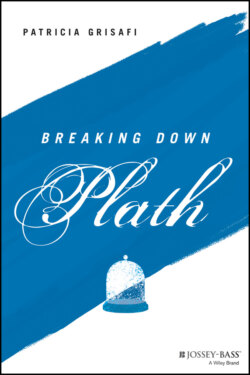Читать книгу Breaking Down Plath - Patricia Grisafi - Страница 17
THE TROUBLE WITH BIOGRAPHY
ОглавлениеOne of the biggest issues in Plath studies has revolved around Plath's biography: Who gets to tell her story and what written version of this life do we trust? What are the biases? What is at stake? Especially when the person being written about is not alive, and therefore cannot defend herself, the issue of biography remains complicated to this day.
Biographies are intended to be factual accounts of a person's life. Using eyewitness accounts, interviews, and artifacts such as letters and journal entries, biographers do the best they can to craft a truthful portrait. But as we have learned over time, eyewitness accounts can be faulty. Memories can change or evolve. And as we see from the editorial controversy around Ariel, narratives can be molded to satisfy certain agendas depending on who is determining them.
When biographers initially started to tackle Plath's life, they came up against various roadblocks. The most difficult to get around was Ted Hughes and his sister Olwyn. Olwyn had been placed in charge of Plath's estate and controlled who was able to use and quote from Plath's work and access her private materials. Specifically, biographers who were inclined to treat her brother with a gentle touch tended to get permission. One biographer, Linda Wagner‐Martin, explained as much in the Preface to Sylvia Plath: A Life (1987): “When I began researching this biography in 1982, I contacted Olwyn Hughes, who is literary executor of the Sylvia Plath estate. Olwyn was initially cooperative and helped me in my research … . As Olwyn read the later chapters of the book, however … her cooperation diminished” (Wagner‐Martin, 1987, pp. 13–14). Wagner‐Martin also added that both Olwyn and Ted's refusal to cooperate led to her inability to use more of Plath's writing in the book: “Consequently, this biography contains less of Plath's writing than I had intended. The alternative would have been to agree to suggestions that would have changed the point of view of this book appreciably” (Wagner‐Martin, 1987, p. 14).
In 1996, Olwyn gave up control of the estate to Frieda and Nicholas. After Nicholas's suicide in 2009, the estate fell solely to Frieda. Currently, Faber & Faber assists Frieda with administrative duties. Having the estate under Frieda's control has made it much easier for biographers to use material, and for readers to learn more about Plath's life and work.
Because Ariel eventually became a foundational text in American literature, and because Sylvia's death became so tied to those poems, her work took on new meaning. But to look at all of Plath's literary products through the veil of her suicide would be to do the poems a disservice.
Plath is not defined by her death. She was a human being who experienced the highs and lows of life and created art inspired by everything from nature to love to childbirth to traveling and so much more. Too often, the poems that deal most directly with mental illness and suicide have been made to stand in for Plath's entire oeuvre, obscuring the range of her poetic interests. As Frieda writes, “I saw poems such as ‘Lady Lazarus’ and ‘Daddy’ dissected over and over, the moment that my mother wrote them being applied to her whole life, to her whole person, as if they were the total sum of her experience.” Plath's death does not represent her entire life and work, but it is an example of how society can let down people who struggle with mental illness. Her art remains a testament to how someone with mental illness can still live a full and productive life.
Plath's life as well as her poetry and prose continue to influence readers in all kinds of ways. Plath is now a pop culture icon and a central figure in American literature. Whereas, when I was growing up and we studied one Plath poem, there are now entire college courses dedicated to Plath studies, indicating that her work is being taken more seriously. Conferences are held, books are written, and paintings and sculpture are created. Her London apartment at 3 Chalcot Square is a national landmark. People make journeys to her grave in Heptonstall, England, to leave pens. Her legacy is one of empowerment, especially for young women who feel stifled by societal expectations. When we study Sylvia Plath's life, we study all the ways that a woman was able to thrive, for a time, in a world that didn't expect her to achieve much.
